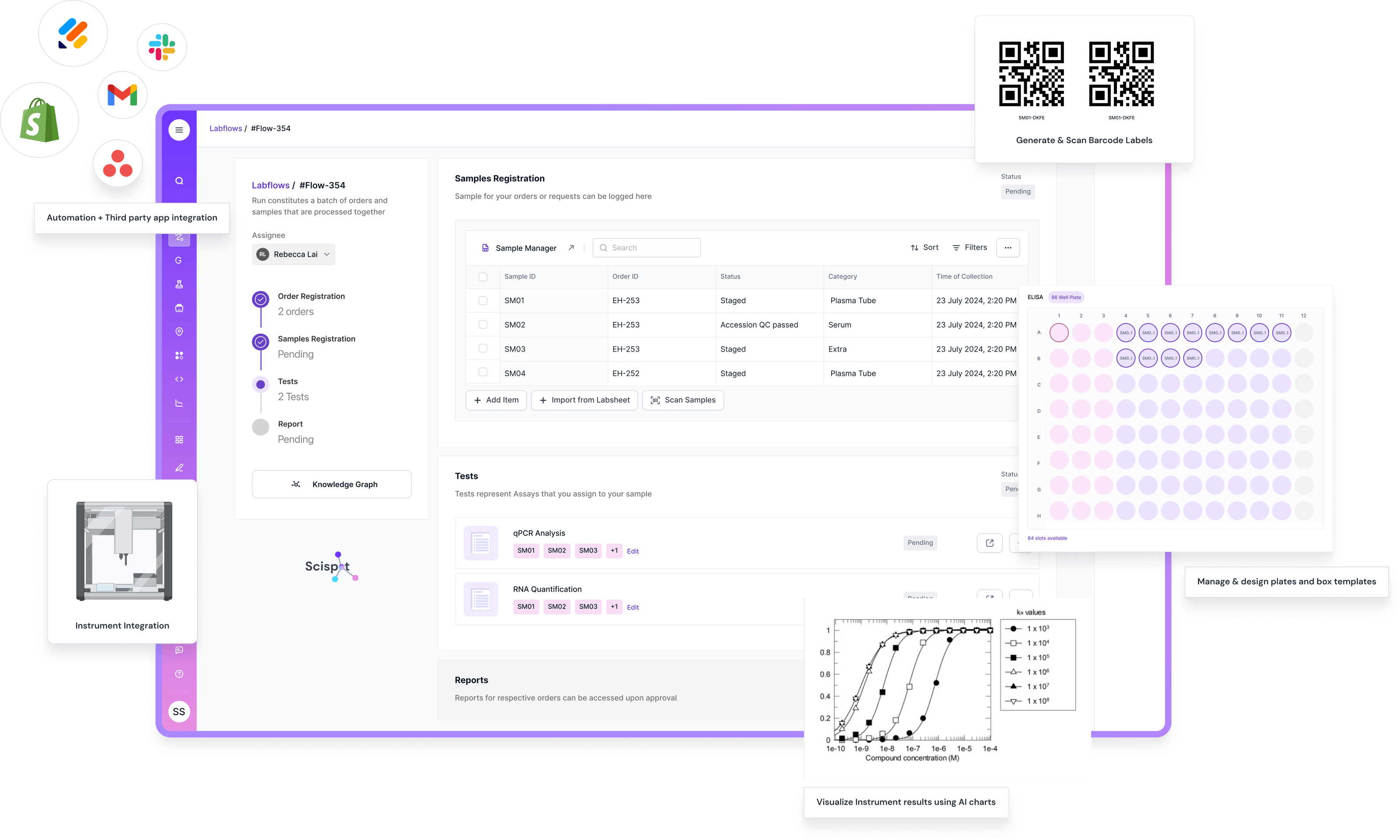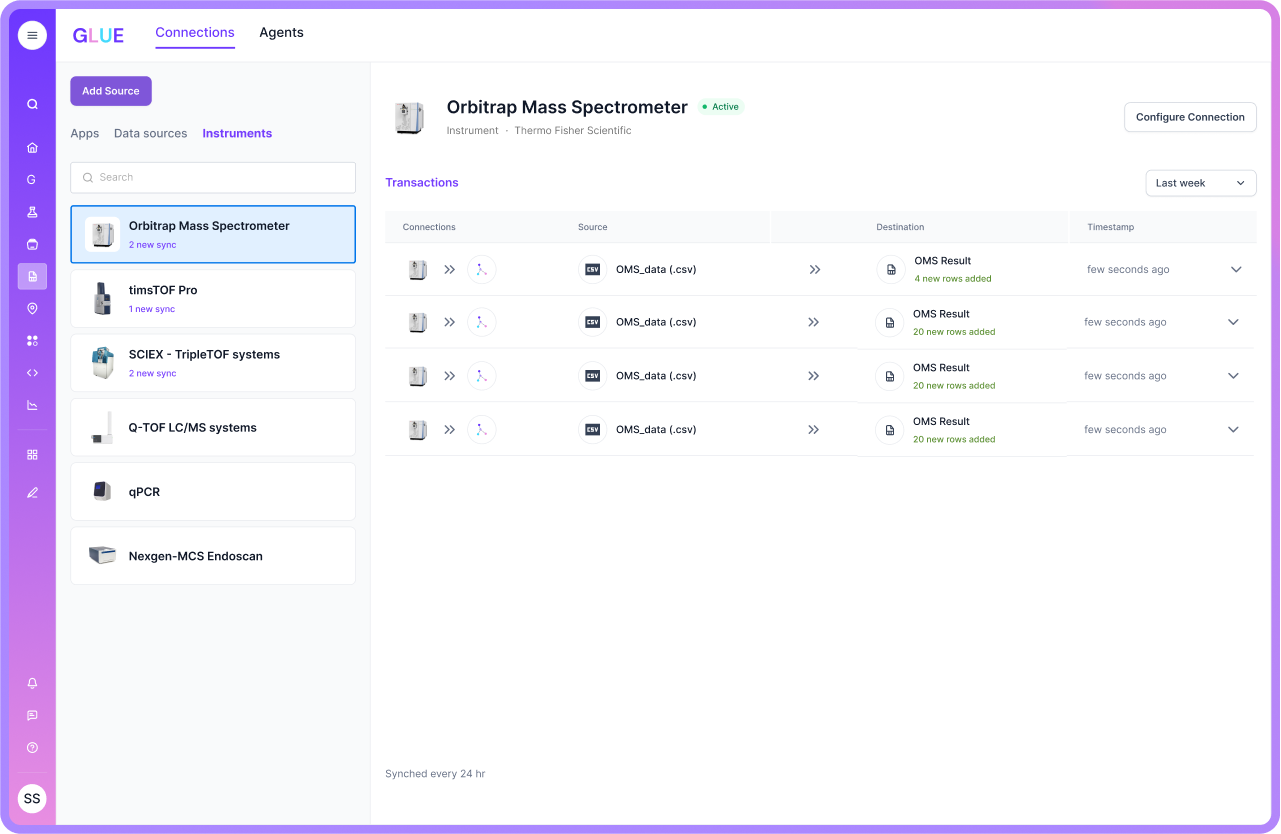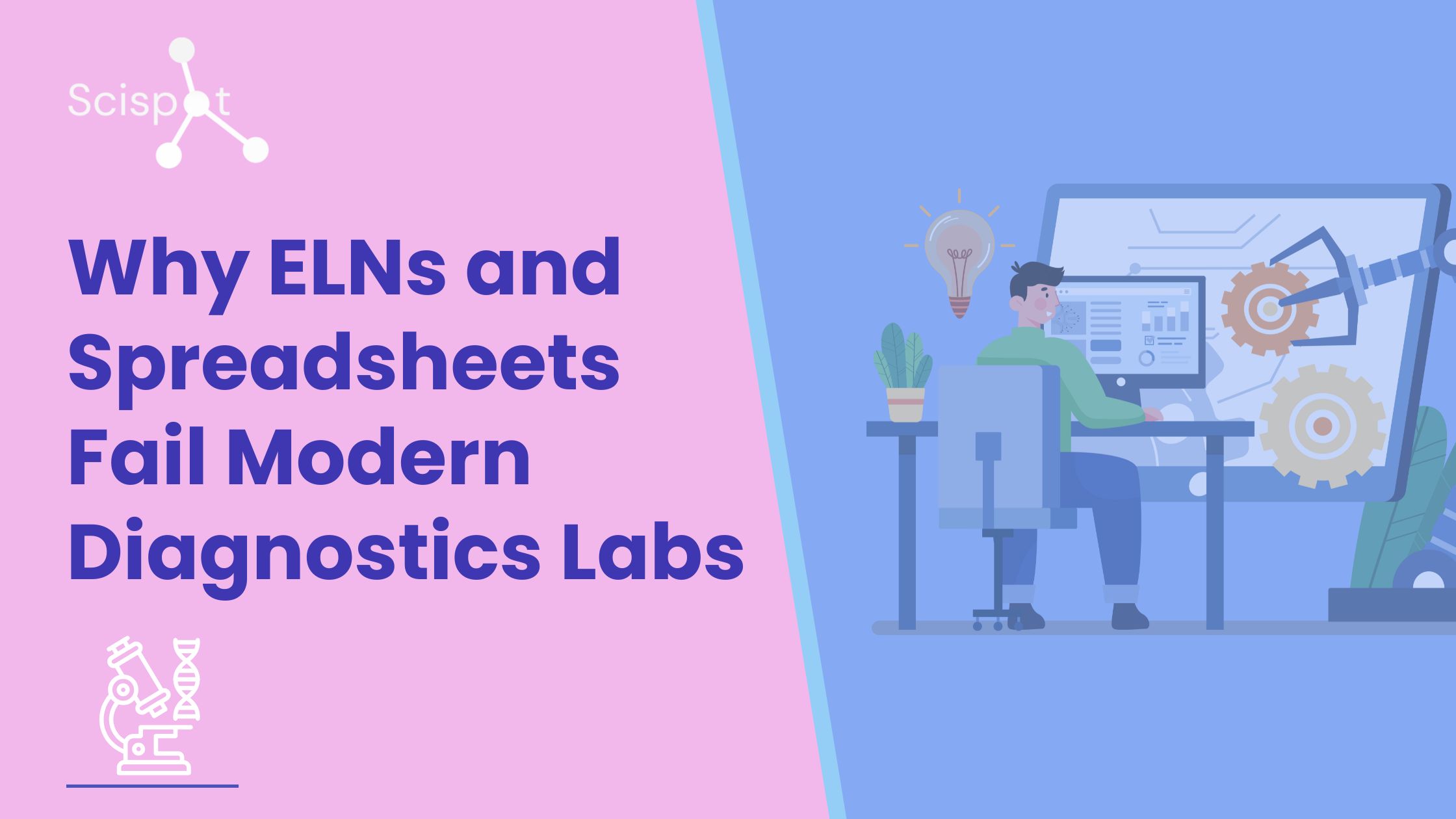Introduction
There was a time when a spreadsheet, a lab notebook, and a team of determined scientists were enough. But diagnostics have changed. The scale has changed. The stakes have changed. Today, when every test, every result, every patient outcome matters, using free‑form tools just doesn’t cut it. It feels a bit like trying to steer a cargo ship with a bicycle handlebar: you’ll move, maybe even well, but as soon as the waves hit, you lose control. In this article, we explore why traditional tools like ELNs and spreadsheets are no longer fit for purpose in modern diagnostics, how the new model of typed capture and structured workflows works, and how Scispot delivers the environment labs need to thrive.

Why ELNs and Spreadsheets Fall Short
Spreadsheets and narrative ELNs have served science well as informal capture tools. But when a diagnostic lab must deal with regulated workflows, traceability, audit trails, integrations, and scale, these limitations become apparent. They offer no strict types (you can type “10 mg” and “ten mg” and “10 mg” and the system treats them the same). Lineage is weak or absent (who changed the value? when? why?). Rules are light or nonexistent, error‑prone copy/paste is common, and integration with AI or downstream pipelines becomes a Herculean task.
In contrast, the world we now inhabit demands more: results that can be traced for compliance, workflows that scale, instruments that integrate, and data that is AI‑ready. Spreadsheets slow you down. ELNs with free‑text capture leave you with hidden messes. They are like writing your novel in plain text with no editing, no versioning, no structure — it works until you publish, but when you try editing or integrating, you realize how fragile everything is.

Enter the Labsheets + Labspace Model
Imagine a capture system that feels familiar to scientists — like filling out a form or a sheet — but, behind the scenes, enforces structure, types, entity links, validity checks, and connects directly to instruments, workflows, and downstream applications. That’s the Labsheets + Labspace model.
Typed tables and templates mean you define your sample table, your run table, your instrument table — with fields that are enforced, linked, and validated. Built‑in IDs and links connect specimens to runs to results. Event hooks and APIs enable instruments to write data directly, and human‑in‑the‑loop gates allow review when needed. Role‑based access and audit trails mean that when you’re in diagnostics and you’re moving from “we’ll trust the scientist” to “we’ll prove the chain of custody”, you’re ready.
Scispot brings this model to life: scientists fill what they need to fill, workflows trigger automatically, instruments speak to the system, audits happen automatically, and the narrative (which still matters) lives side‑by‑side with structured capture in the same platform.

How to Migrate (without Chaos)
Change is never easy — scientists are used to their sheets, their notes, their freedom. But migrating to typed capture doesn’t require ripping everything out and starting over. It’s a journey. Start by cataloguing your sheets and ELN templates. Pick one high‑volume assay to convert. Build the typed template in your new platform. Add validation and defaults to eliminate common errors. Train users: show them how this new tool saves them time, reduces re‑work, and gives them insight instead of extra work. Then roll it live, iterate, and expand.
Measure progress: track the error rate per 1,000 rows before and after, time to locate a record, % of fields with valid types, and audit response time. Celebrate the wins, be transparent about the challenges.

Why It Matters
For diagnostics at scale, data isn’t optional. It’s mission‑critical. Using spreadsheets or free‑form ELNs means you’re constantly firefighting: missing fields, ambiguous records, audits that take days, and integration that fails. With typed capture and structured workflows, your error rate drops, audits become simpler, AI‑readiness grows, and scientists spend less time hunting records and more time interpreting results.
Conclusion
If you’re still relying on spreadsheets or narrative ELNs as your diagnostic backbone, you’re operating in yesterday’s world. The future is structured capture, automated workflows, integrated systems—and you can get there without sacrificing the story that scientists tell. With Scispot’s Labsheets + Labspace model, you blend narrative and structure, freedom and control, so your diagnostics lab doesn’t just scale—it thrives.






.webp)
.webp)
.webp)



